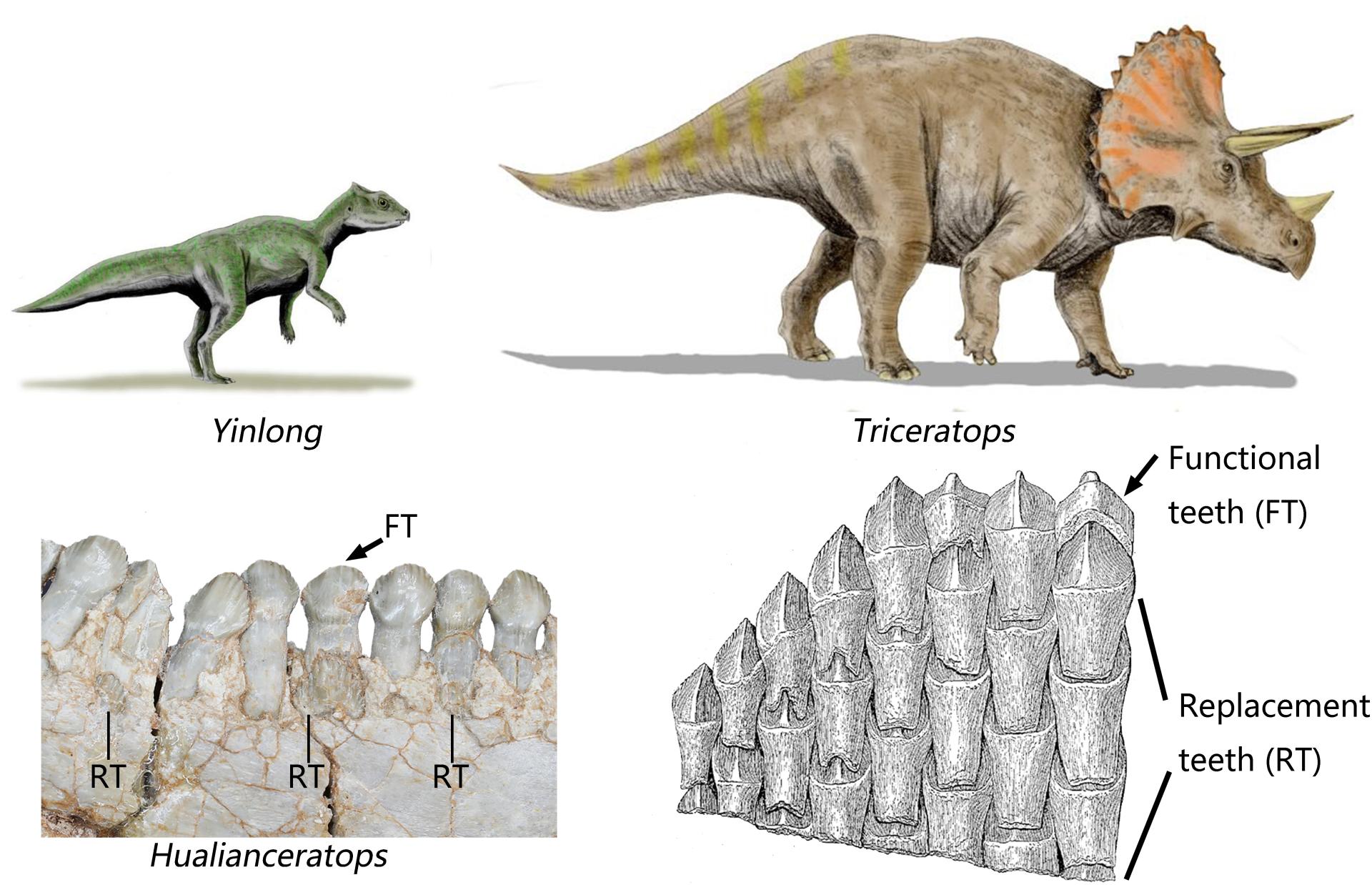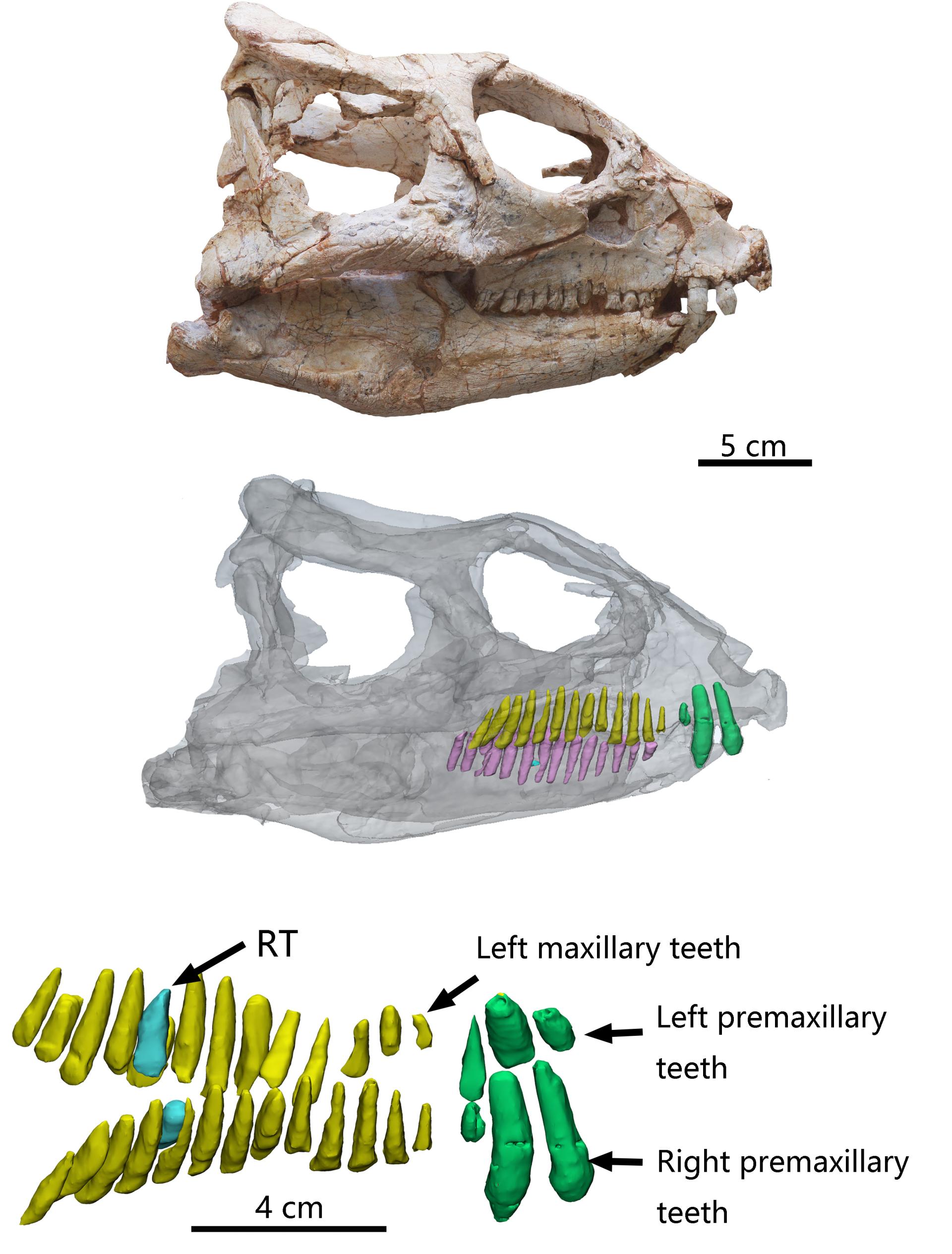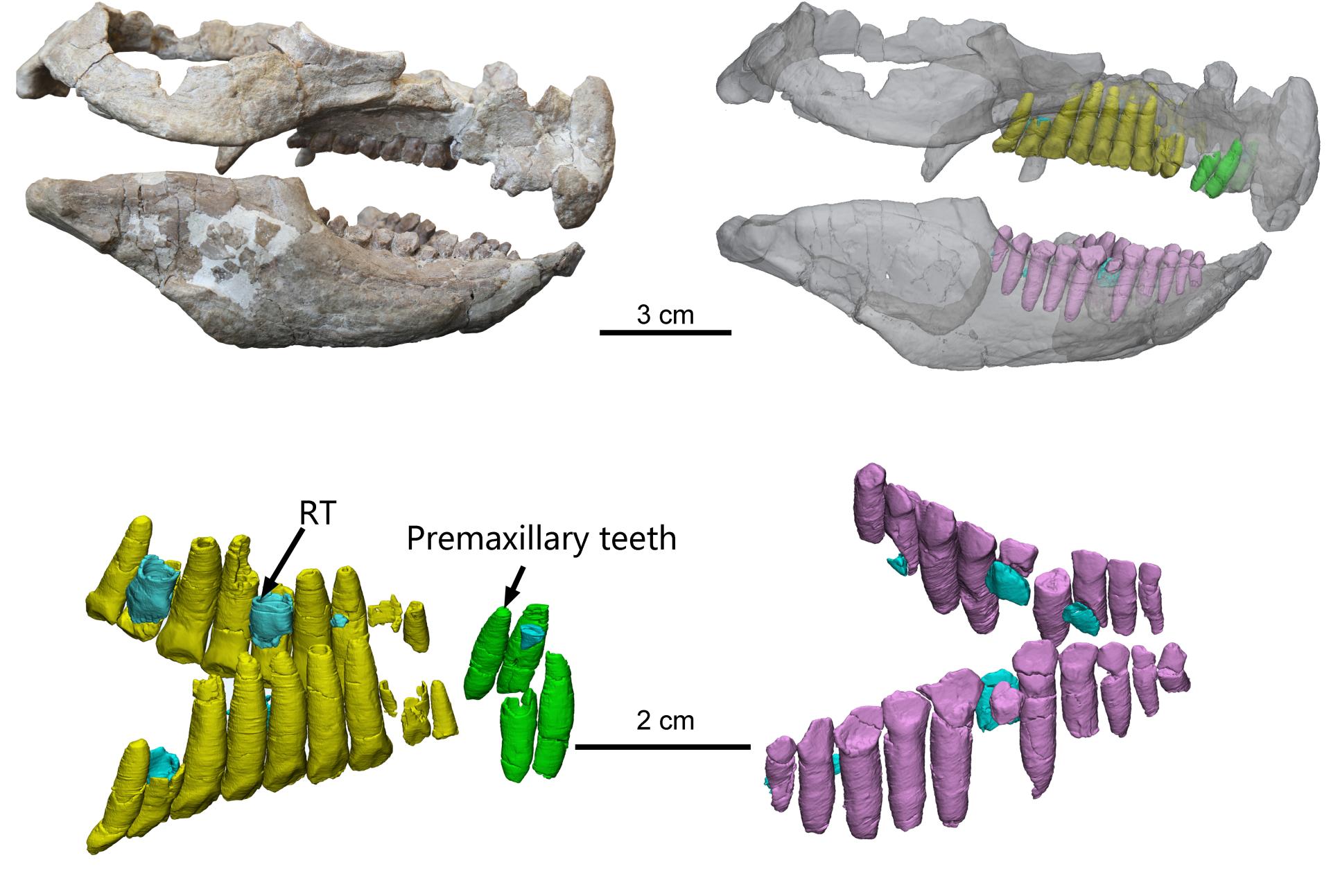Mammals including humans only replace teeth once in a lifetime. After baby teeth are shed, permanent teeth will accompany us for the rest of our life. In reptiles, however, teeth are constantly replaced in a wave-like pattern during their lifetime. So how did dinosaurs replace their teeth?
Triceratops from the Late Cretaceous of North America is famous for bearing horns and frills, but it is likely to be overlooked that they bear about 800 teeth in the mouth and at least 5 teeth in one alveolus (Figure. 1). Triceratops replaced all its teeth every three months, faster than most other dinosaurs. In addition, Triceratops evolved a complex suite of osseous dental tissues, which is still undeveloped in early ceratopsians. The study of the early ceratopsians could help us to understand the origin of this unique dental system.

Figure 1. Restoration (illustrated by Nobu Tamura) and mandibular teeth of early-diverging ceratopsians (left) and Triceratops ( right). The lower right drawing according to Hatcher (1907).
Recently, Fenglu Han from China University of Geosciences(Wuhan) united other researchers to deeply study the dental morphology and tooth replacement traits of early-diverging ceratopsians. The research reveals the tooth replacement pattern of early-diverging ceratopsians and provides new insights for studying their feeding strategy. The paper has been published in eLife online (//doi.org/10.7554/eLife.76676).
Normally, we can only see the crowns of dinosaurs, whereas the roots and replacement teeth are usually hidden in the jaw. The researchers scanned three Jurassic ceratopsians found in China, including Yinlong downsi, Hualianceratops wucaiwanensis, and Chaoyangsaurus youngi, with micro-computed tomography (CT). The team reconstructed 3D models of all dentitions of these specimens, and studied the development of each functional tooth (tooth performing chew or other function) and each replacement tooth (newly erupted but not performing function) through the upper and lower jaws (Figures. 2-3).

Figure 2. Photograph (top) and transparent reconstruction (middle) of Yinlong downsi skull. 3D models of premaxillary and maxillary dentitions (bottom). Yellow denotes maxillary teeth. Green denotes premaxillary teeth. Cyan denotes replacement teeth.
The researchers studied four skulls of Y. downsi and found that they have distinct tooth replacement traits with Triceratops (Figure. 2). Only 62 functional teeth and 5 replacement teeth exist in the upper and lower jaws. The teeth count increases and the count of replacement teeth decreases in the largest specimen, which suggests that the tooth replacement ratio is slower in adults than in juveniles.
The researchers also study the other two early-diverging ceratopsians. The result displays that Chaoyangsaurus bears about 42 functional teeth but with 14 replacement teeth, which implies a higher tooth replacement ratio than Yinlong (Figure. 3). Another early-diverging ceratopsian, Hualianceratops wucaiwanensis from the same region of Yinlong, bears 5 replacement teeth and 10 functional teeth in an incomplete mandible. It represents the early-diverging ceratopsian with the highest tooth replacement ratio. The tooth replacement ratio of these early-diverging ceratopsians is far slower than that of Triceratops.

Figure 3. Photograph (upper left) and transparent reconstructions (upper right) of the skull of Chaoyangsaurus. 3D models of the upper jaw (lower left) and lower jaw (lower right) dentitions.
In summary, the low number of replacement teeth in early-diverging ceratopsians implies a slow tooth replacement ratio. The replacement teeth erupted lingual to the functional teeth in early-diverging ceratopsians whereas inside of the pulp cavities in Triceratops.
Why are the dentition of early-diverging ceratopsians and Triceratops so different? Firstly, Yinlong downsi was 120 cm long whereas Triceratops was 9 m long and weighed 12 tons as much as 2 male elephants. The larger body size made Triceratops greater food intake, and that is possibly one of the reasons for the difference in dentitions. Secondly, complex dentitions in Triceratops help more fully chew food in the mouth. The simple dentitions in early-diverging ceratopsians may only cut plants instead of fully chewing food. The difference in function also may lead to the difference in the dentitions.
Interestingly, Y. downsi and another early-diverging ceratopsian Psittacosaurus all have preserved gastroliths, which suggests that they probably swallowed small stones and used them to aid digestion like modern birds. Therefore, less pressure on the dentitions may be another reason for simple morphology.
This work was supported by the National Natural Science Foundation of China and the International Partnership Program of the Chinese Academy of Sciences.
Reference:
Hu, J., Forster, C. A., Xu, X., Zhao, Q., He, Y., & Han, F. (2022). Computed tomographic analysis of the dental system of three Jurassic ceratopsians and implications for the evolution of tooth replacement pattern and diet in early-diverging ceratopsians. eLife. 11: e76676
DOI: 10.7554/eLife.76676